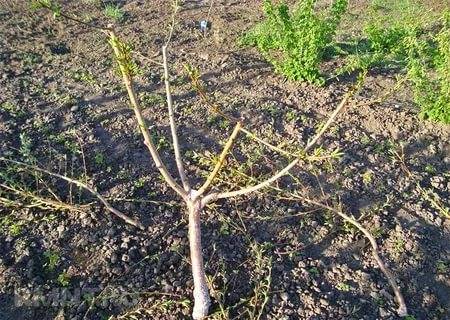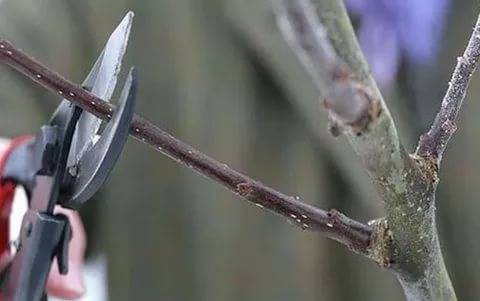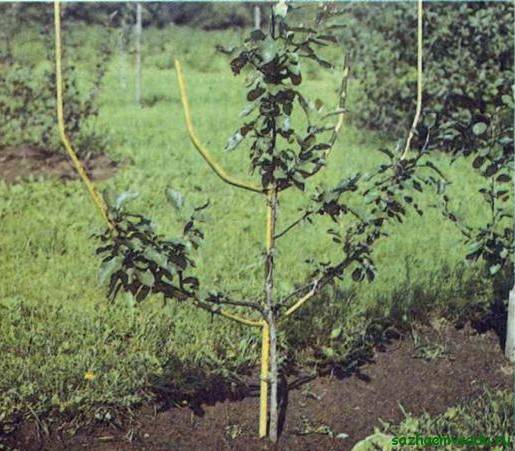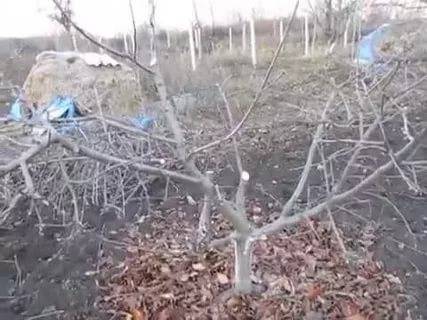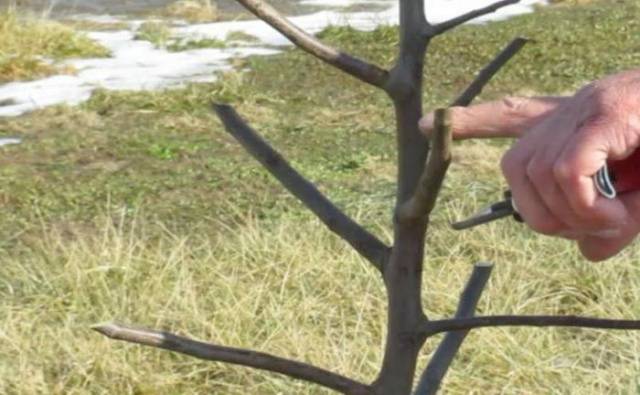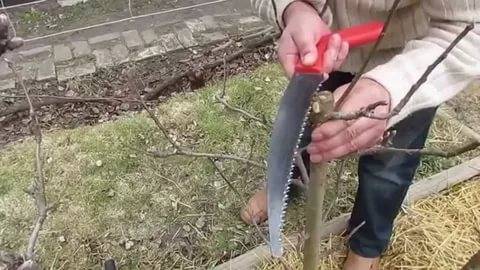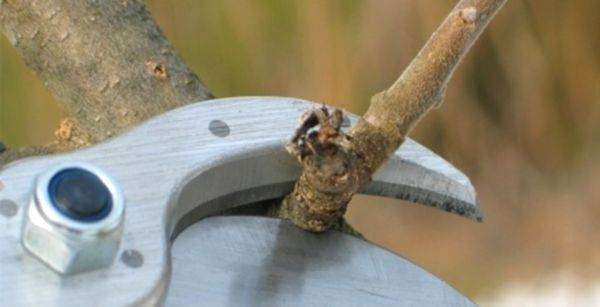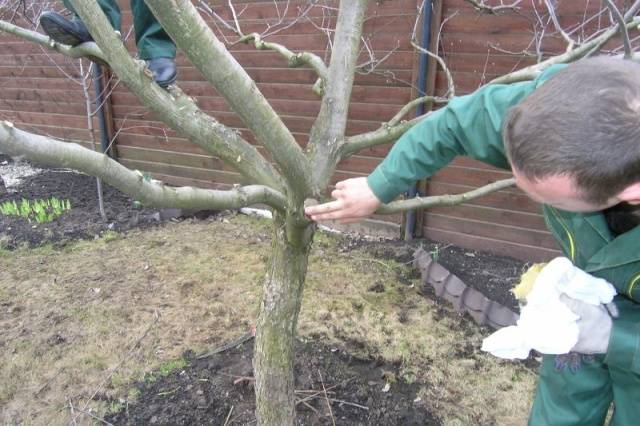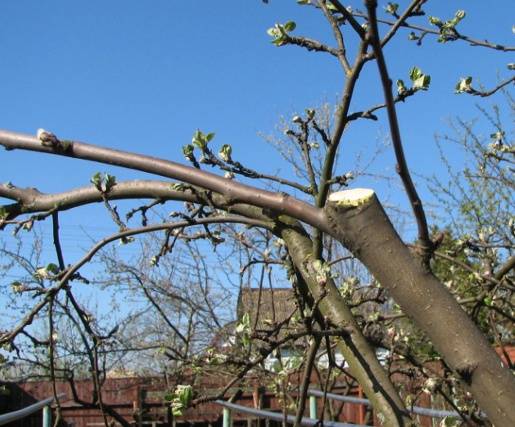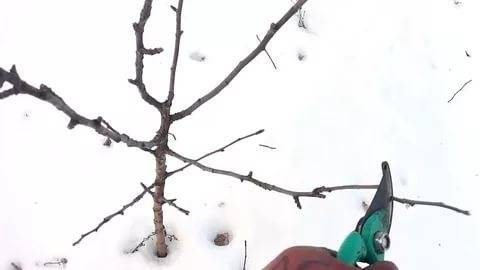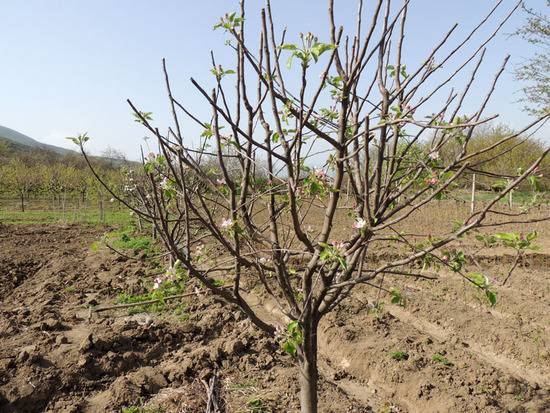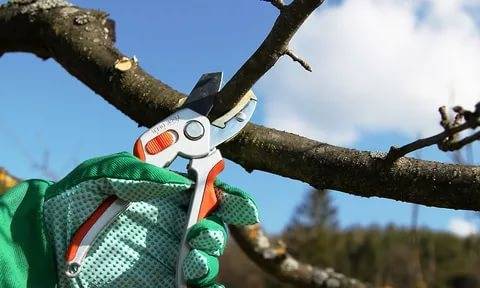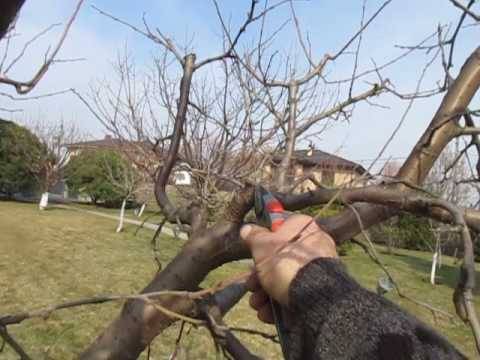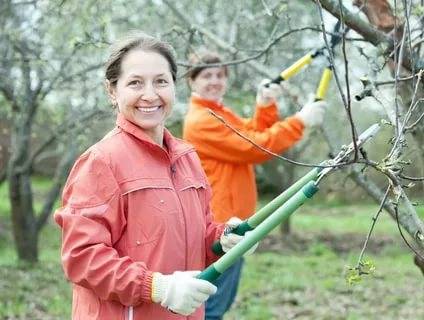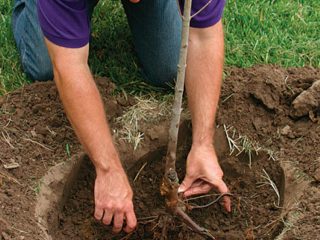Content
More and more often you can see wonderful gardens of dwarf apple trees, densely dotted with appetizing fruits. They occupy a small area, and their care is not very difficult. You just need to know when to water and feed and how to cut a dwarf apple tree in autumn.
Dwarf apple trees form a crown similar to the branching structure of a normal one, but they need regular pruning. Without her dwarf trees will not give high yields. The term of their fruiting will also be reduced.
The need for pruning
Regular pruning of dwarf apple trees is essential for the right balance between root and crown. Without it, the tree will eventually cease to bear fruit completely, since the root system will not be able to provide food for the overgrown tree. However strongly cut the apple tree also should not - in this case, the roots will receive less nutrients from the foliage.
Pruning frees the fruit tree from old, diseased, or damaged branches. And also allows you to avoid thickening of the crown.
With the help of pruning, the structure of skeletal branches is formed, which ensures a sufficient sparseness of the crown. Therefore, gardeners attach great importance to it. Variants crown formation differ in the distance that remains between the skeletal branches.
In the first year after planting the seedlings of a dwarf apple tree, pruning should ensure its survival in a new place. In the future, it helps to maintain high yields, adjusts to the subsequent development and fruiting of the tree.
Sometimes the purpose of trimming is rejuvenation dwarf apple tree. For old or diseased trees, this method is used to save them.
Basic terms
To understand the process of pruning dwarf apple trees, a novice gardener should familiarize himself with the existing terminology:
- a shoot that grows within a year is called an annual;
- branches growing from the trunk are considered to be branches of the first order, shoots growing from them are considered to be branches of the second order;
- an escape, which is an extension of the trunk, acts as a leader;
- twigs that have sprouted during the summer - growth;
- fruiting branches on which the crop is formed are called overgrown;
- next to the growth of the central shoot, a lateral shoot can grow, it received the name of a competitor;
- flowers are formed from flower buds, and shoots develop from growth buds.
Pruning rules
There are several basic rules for pruning dwarf apple trees in autumn:
- it should be carried out after the end of the leaf fall, when the tree is already at rest - during this period it will more easily cope with the stress associated with pruning the shoots;
- pruning should be carried out before the onset of frost, so that all the cuts have time to heal, otherwise they will freeze and the tree will weaken;
- winter pruning is unacceptable, because the tree is dormant and is not able to heal the cuts;
- already in the first two years, it is necessary to adjust the arrangement of the skeletal branches so that the more powerful branches are lower than the weak ones - this technique contributes to a more even development of the branches;
- it is recommended to first cut off large branches to see how much the thickening of the crown has changed - this rule protects the dwarf apple tree from unnecessary pruning;
- after pruning, there should be no hemp left, as they provoke further decay and the formation of a hollow on the trunk.
Tool
In order for the work done on pruning apple trees in the fall to be of high quality, you need to prepare a set of tools with sharpened blades. They must be selected depending on the thickness and location of the branches:
- pruning shears with long handles are used when removing thick or hard-to-reach branches;
- for some shoots, it is more convenient to use a garden knife with a curved blade;
- special care is required when handling garden saws with blades sharpened on both sides;
- small shoots are sometimes easier to remove with a saw with a curved blade;
- thin shoots are easily cut with garden shears;
- all sections should be smooth and clean, if they turn out to be uneven and shaggy, then healing will take longer, during which fungi can start;
- if a branch is cut with a saw, you must first make a cut, otherwise the branch may break off;
- rough cuts must be cleaned with a knife until smooth.
Types of pruning
For young dwarf trees, light pruning is carried out to strengthen the branches. They are shortened by a quarter of the annual increase. New shoots will sprout from the cut in the spring, forming the desired crown.
With medium pruning, the branches of the apple tree are removed by a third, which also contributes to the formation of new shoots. At the same time, the correct crown is formed. This type of pruning is suitable for both 5-7 year old trees and old trees.
Strong pruning of dwarf apple trees is used when the growth and development of the tree stops, fruiting decreases. With strong pruning, fruiting branches are partially removed in order to ensure sufficient sparseness of the crown and access of air and sunlight to the apples. The branches are cut in half.
General scheme of the procedure
Autumn pruning of a dwarf apple tree includes the following manipulations:
- the first to be removed are thick branches that are cracked under the weight of apples or have received other damage - they will still freeze in winter;
- at the next stage, pruning should touch the numerous shoots that thicken the crown - only the strongest of them can be left;
- among the one-year growth, there are many shoots growing at the wrong angle - it is better to remove them immediately, since they will easily break from a gust of wind or when snow adheres;
- slices must be disinfected immediately - you can lubricate with garden var;
- it must be applied in a thin layer, otherwise it will dry out and fall off, exposing the wound;
- other damaged areas of the trunk should be treated with garden pitch;
- the pruning of branches must be collected and immediately burned - they must not be left under the tree so as not to attract pests.
Features of pruning young trees
The first pruning of a dwarf apple tree after planting is essential to stimulate further fruiting. It should be carried out immediately after planting the seedling, in early spring, when the buds have not yet woken up. The seedling needs more nutrition to relieve the stress after transplanting and to establish itself as quickly as possible. Pruning just stimulates it for rapid development and prevents it from spending energy on the growth of unnecessary shoots.
In the first year, the main shoot of a dwarf apple tree is shortened to a height of 0.3-0.5 m. The next year, when the side shoots sprout, pruning is performed depending on the chosen crown shape. For a more lush crown, branches that are directed outward should be left, and the upper buds should be removed.
If it is planned to form a longline crown, then in the second year the upper lateral shoot is cut to 0.3 m from its base, and the rest to its level. After pruning, the central shoot of the apple tree should be 0.3 m higher than the others. 4 of the strongest lateral shoots remain.
If it is supposed to form a non-tiered crown, then the largest lateral shoot should be cut 0.2-0.25 m from the base, and two more main shoots can be germinated on the central one with a distance of up to 0.3 m between them.
The main skeletal branches should grow from each other no closer than at a distance of 0.5 m. They must be formed in such a way that the skeletal branches do not have the same directions, do not interfere with each other, but grow in a free zone.
In dwarf apple trees, in the second year, the growth of the central shoot for any type of crown is shortened by a third, and new skeletal branches by half.
The next year, the growth of skeletal branches is cut off, leaving from 35 to 45 cm from the beginning of growth, depending on the ability of the shoot to branch. This pruning persists for several years. Starting from the third year, it is also necessary to thin out the crown and shorten the length of last year's shoots to 25 cm.
Subsequent pruning
When a fruiting crown is formed, dwarf apple trees will still produce annual shoots that help increase yields. For them, pruning consists in thinning the crown:
- removing shoots growing inside it, as well as those that grow up or down;
- pruning intertwining branches;
- removing broken or weak branches;
- shoots appearing on lateral shoots are also removed.
If the one-year growth has decreased in volume or has become shorter, anti-aging pruning is performed. It has a strong stimulating effect on the productivity of the dwarf apple tree and is carried out no more often than after 6-7 years. With anti-aging pruning, the skeletal branches are shortened to 2-5 years old wood. Additionally, crown thinning is carried out.
A strong one-time pruning will weaken the apple tree, so it will take several years. Sometimes, to increase yields, vertical branches are tied in order to change their orientation to horizontal, on which more fruits are tied.
The reason for the decrease in the fruiting of a dwarf apple tree can also be the overgrowth of the near-stem circle. weeds... In this case, you need to clear the area of weeds, organize watering of the tree and shorten the annual growth.
Experienced gardeners are advised to keep an observation diary and enter into it all changes in the development of a dwarf apple tree. Regular observation will help you gain the necessary experience in gardening.
Pruning is not very difficult, but an important procedure in caring for dwarf apple trees. If done correctly, the annual bountiful harvest of tasty fruits is ensured.
